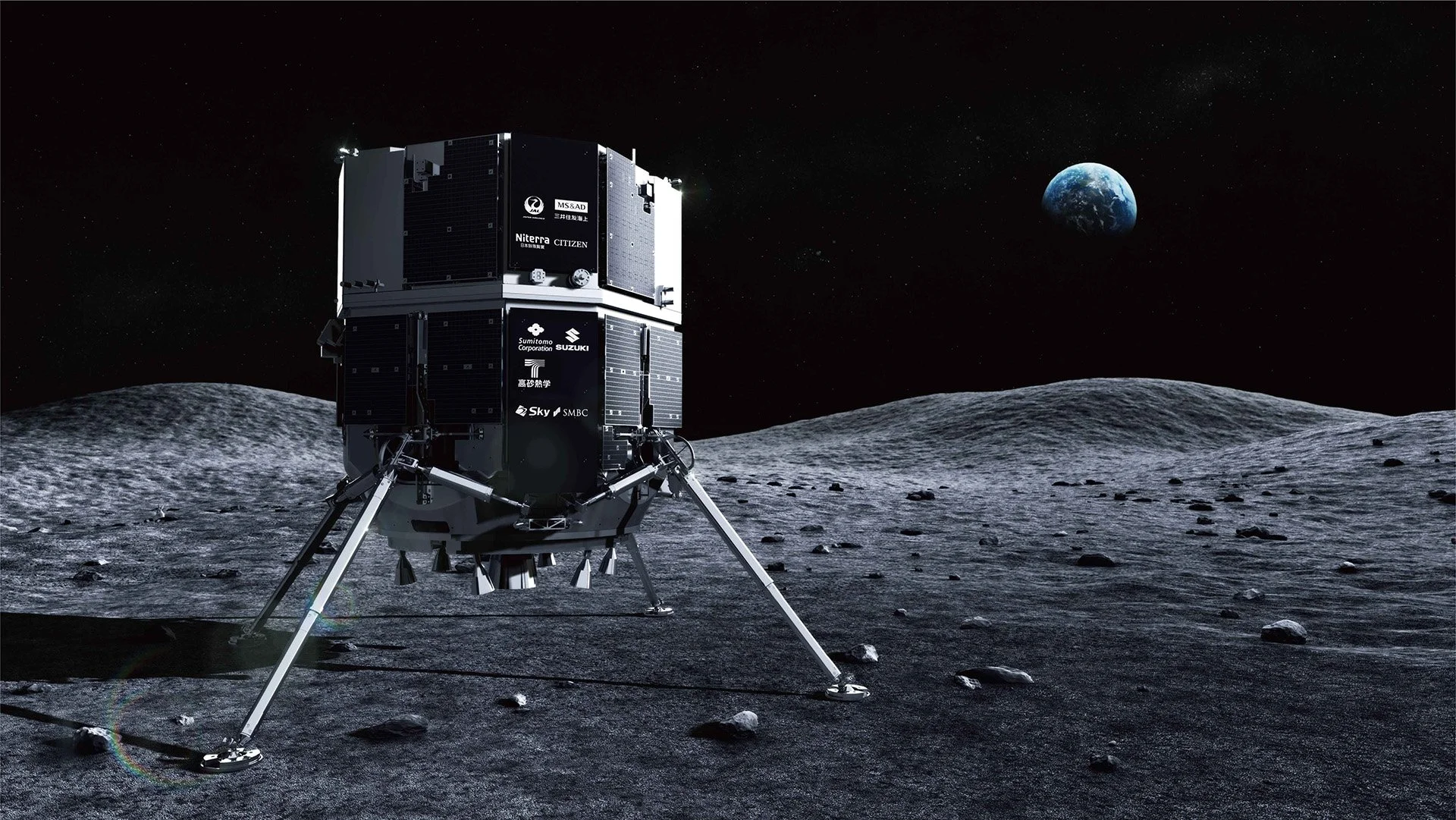Status Update on ispace HAKUTO-R Mission 1 Lunar Lander
ispace, inc., (ispace) a global lunar exploration company, issued an update on the status of the HAKUTO-R Mission 1 Lunar Lander.
The HAKUTO-R Mission 1 Lunar Lander was scheduled to touchdown on the surface of the Moon at approximately 1:40 a.m. JST. As of 8:00 a.m. JST, April 26, 2023, the communication between the lander and the Mission Control Center was lost, although it was expected even after the touchdown, and it has been determined that Success 9 of the Mission Milestones is not achievable.
Based on the currently available data, the HAKUTO-R Mission Control Center in Nihonbashi, Tokyo, confirmed that the lander was in a vertical position as it carried out the final approach to the lunar surface. Shortly after the scheduled landing time, no data was received indicating a touchdown. ispace engineers monitored the estimated remaining propellant reached at the lower threshold and shortly afterward the descent speed rapidly increased. After that, the communication loss happened. Based on this, it has been determined that there is a high probability that the lander eventually made a hard landing on the Moon’s surface.
To find the root cause of this situation, ispace engineers are currently working on a detailed analysis of the telemetry data acquired until the end of landing sequence and will clarify the details after completing the analysis.
For Mission 1, it has been determined that Success 9 of the Mission 1 Milestones, successfully landing on the Moon and establishing communications, is no longer achievable. Despite this, the mission has already achieved Success 1 through Success 8. In addition, while attempting the completion of Success 9, the Mission Control Center was able to acquire valuable data and know-how from the beginning to nearly the end of the landing sequence, which will enable a future successful lunar landing mission. It is strongly believed that this is a great leap forward to future lunar exploration and an important milestone to advance space development by the private sector toward the next level not only in Japan but also the world.
ispace will continue to make the most of the data and know-how acquired during the operation through Success 8, and landing sequence including aspects of Success 9, aiming to dramatically improve the technological maturity of Mission 2 in 2024 and Mission 3 in 2025.
“Although we do not expect to complete the lunar landing at this time, we believe that we have fully accomplished the significance of this mission, having acquired a great deal of data and experience by being able to execute the landing phase. What is important is to feed this knowledge and learning back to Mission 2 and beyond so that we can make the most of this experience,” said Takeshi Hakamada, Founder and CEO of ispace. “To this end, we are already developing Mission 2 and Mission 3 concurrently and have prepared a foundation that can maintain this continuity. I would like to thank once again all the employees who have contributed to this mission from its inception to the present, all the families who have continued to support it, and all the shareholders, HAKUTO-R partners, customers, suppliers, and many others who have continued to believe in ispace’s vision. We will keep moving forward.”
“Today, ispace’s HAKUTO-R” Mission 1 became the first private company to attempt to land on the Moon, but unfortunately, the landing could not be realized, said Hiroshi Yamakawa, President of the Japan Aerospace Exploration Agency (JAXA). “As a fellow Japanese space enthusiast, I am proud of ispace’s challenge and respect the efforts of everyone involved. ispace will analyze the data obtained from this mission and use it as a foundation for the next mission. JAXA will continue to make steady progress together with ispace, the industry and organizations challenging space, and our international partners, and will contribute not only to space exploration activities but also to the sustainable development of human society.”
“The Mission underpins the successful cooperation between ESA and ispace. Such collaboration schemes between new space companies and space agencies open up exciting opportunities for the future of lunar exploration and other domains. Accounting for new space approaches is also a central element of ESA’s agenda 2025. I’m convinced that the HAKUTO-R Mission 1 is only the beginning of many fascinating projects and activities to come,” said Josef Aschbacher, Director General of the European Space Agency.
“ispace has already accomplished a tremendous feat by entering lunar orbit and attempting a fist landing. What they are trying to do is so complex and at the cutting edge of technology that success is not guaranteed at the first attempt. The experience and unique expertise gained by the team will help make the next mission a success,” said Marin Sion, CEO of ArianeGroup.
Draper released the following statement: “The historic maiden commercial mission of ispace inc.’s M1 HAKUTO-R achieved numerous significant first-time achievements, but ultimately fell short of its goal of landing safely on the Moon. M1 HAKUTO-R experienced an anomaly, ending the mission prematurely. Though the mission did not achieve its ultimate goal, by successfully reaching cislunar space and orbiting the Moon, the mission represents an important step forward for the international space economy. Draper serves on ispace’s team for the M1 HAKUTO-R mission and will collaborate on missions M2 and M3. We look forward to our ongoing partnership with ispace, both now and in the future.”
